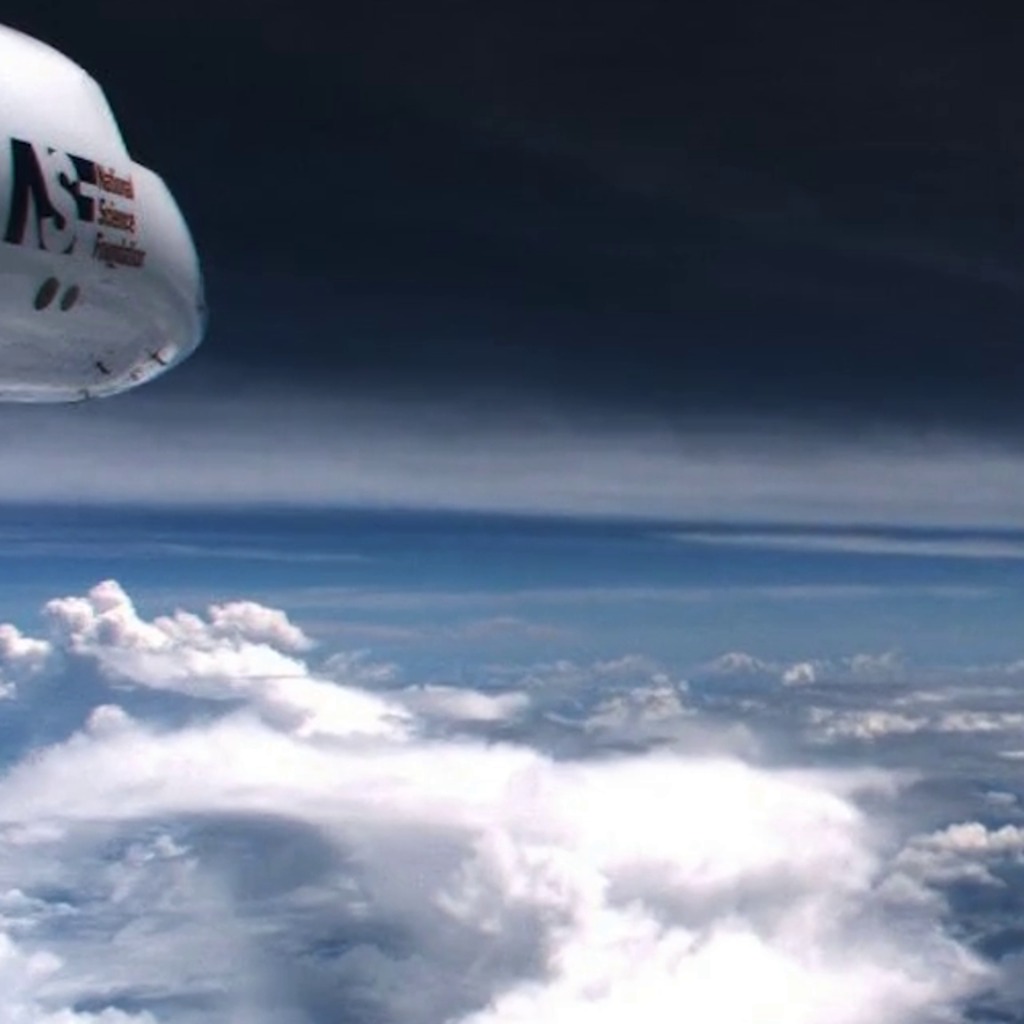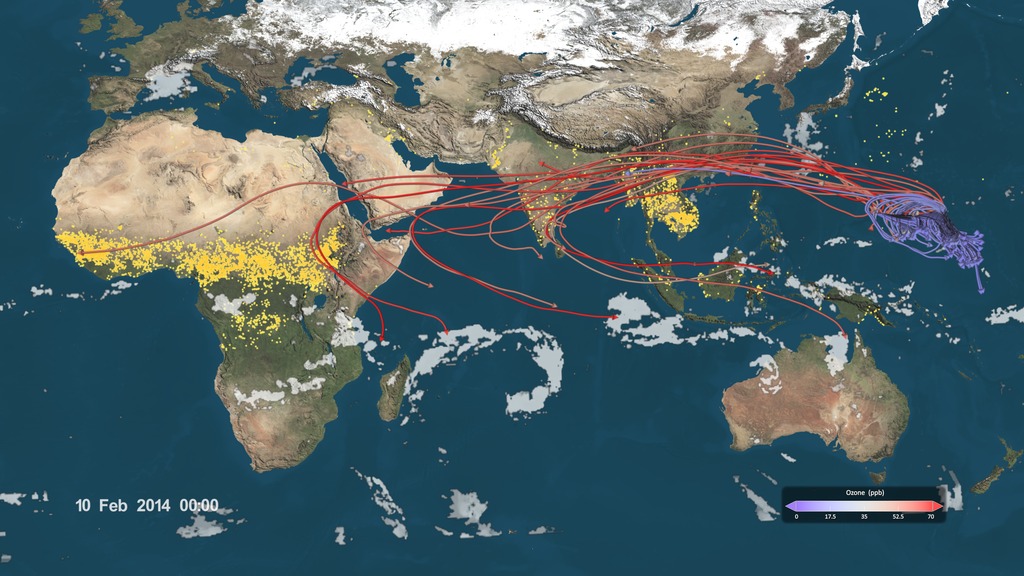Scientists Link Faraway Fires To High Ozone Levels In Pacific
NASA-funded scientists have traced the origins of mysterious pockets of high ozone concentrations and low water vapor in the air above the western Pacific Ocean near Guam to fires burning in Southeast Asia and in Africa, half a world away.
These pockets of ozone—a powerful greenhouse gas—are three times more concentrated than surrounding air and are found at around 30,000 feet in the lower part of Earth’s atmosphere known as the troposphere, within the cruising altitude of most commercial airliners. As a greenhouse gas, ozone in the troposphere is an important contributor to global warming, but because it varies widely in where it occurs and how long it stays aloft, its true impact on climate change is hard to determine.
Researchers studying the air over Guam during the winter of 2014 during a pair of airborne field campaigns captured a comprehensive picture of the chemicals traveling with the ozone—chemicals such as hydrogen cyanide and acetonitrile, which originate in fires. Using a data-driven computer model, they then traced the ozone-laden air pockets back 10 to 15 days in most cases—right back to fires in either Southeast Asia, about 2,000 miles away, or tropical Africa, over 8,000 miles away.
Complete transcript available.

Ozone Transportion
GIF created from Scientific Visualization of Ozone transport.
Scientists traced high concentrations of ozone, seen in orange, from the Western Pacific Ocean to fires in Southeast Asia and tropical Africa.
This GIF is optimized for Twitter.

Forest Fire
This GIF was created from footage of forest fires seen in the video.
Burning vegetation releases organic compounds and gases that mix to create ozone, a powerful greenhouse gas.
This GIF is optimized for Twitter.

Rising Smoke
This GIF was created from footage of forest fires seen in the video.
Winds transport gases and ozone sometimes thousands of miles away.
This GIF is optimized for Twitter.

Airplane flight footage
This GIF was created from flight footage provided by the Coordinated Airborne Studies in the Tropics (CAST) and CONvective TRansport of Active Species in the Tropics (CONTRAST) aircraft campaigns based in Guam.
Scientists studying the atmosphere over Guam in the Western Pacific Ocean found pockets of ozone and traces of burned vegetation that originated in fires in Southeast Asia and Africa.
This GIF is optimized for Twitter.
For More Information
Credits
Please give credit for this item to:
NASA's Goddard Space Flight Center
-
Producer
- Sophia Roberts (USRA)
-
Science writer
- Ellen T. Gray (ADNET Systems, Inc.)
-
Scientist
- Daniel C. Anderson (University of Maryland)
-
Visualizer
- Cindy Starr (Global Science and Technology, Inc.)
Release date
This page was originally published on Wednesday, February 24, 2016.
This page was last updated on Wednesday, May 3, 2023 at 1:48 PM EDT.

